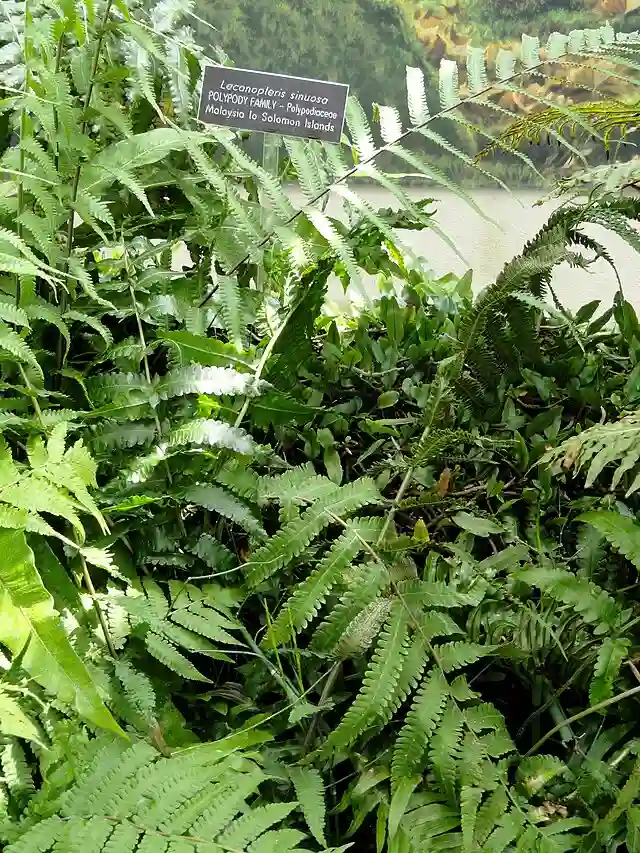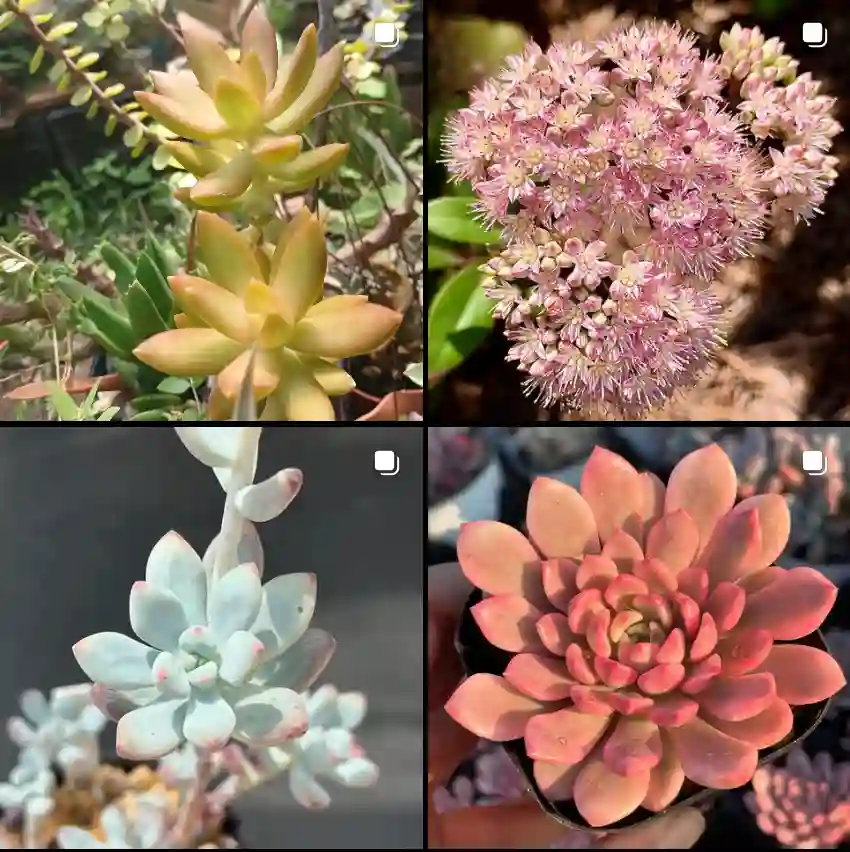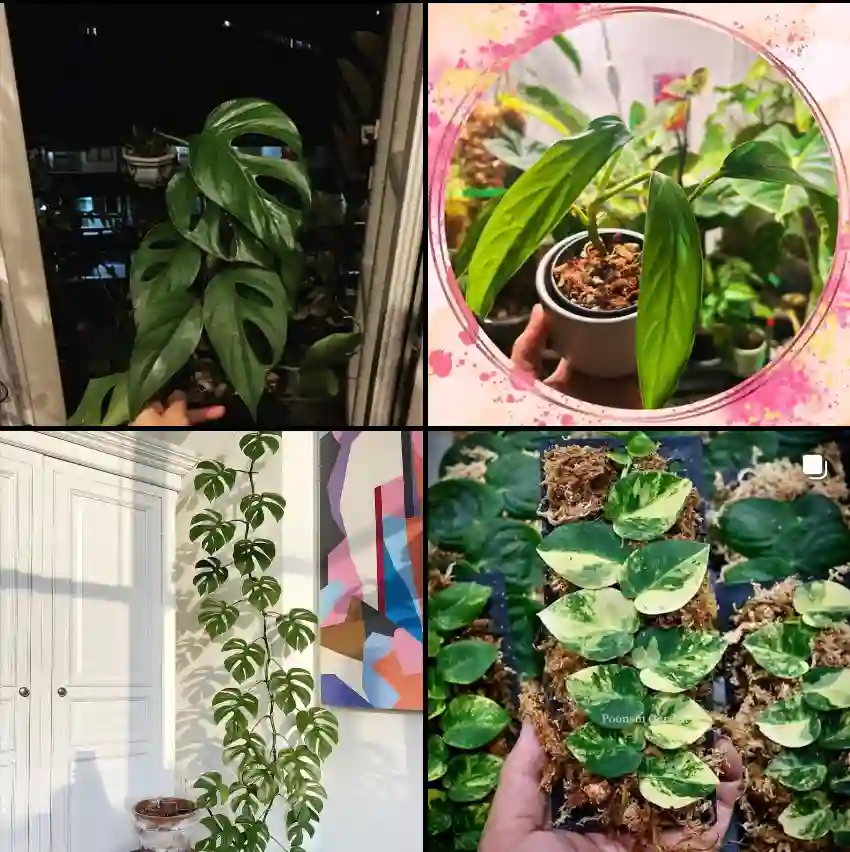The Araceae family, often referred to as the aroid family, is a diverse and captivating group of plants that includes over 140 genera and approximately 3,750 species. Among these genera, Philodendron, Zantedeschia, Anthurium, Caladium, Zamioculcas, Peltandra, Arum, Spathiphyllum, Syngonium, Aglaonema, Colocasia, Dieffenbachia, Epipremnum, Monstera, and Xanthosoma stand out as some of the most well-known and cherished members. Each genus within the Araceae family brings its unique characteristics, making them popular choices for both indoor and outdoor cultivation, as well as for botanical enthusiasts and collectors.
In this comprehensive guide, i will delve into the world of these genera, exploring their origins, distinctive features, growth requirements, and some of the most popular species within each genus. Whether you’re a seasoned plant enthusiast or a novice gardener looking to expand your collection, this article aims to provide you with a deeper understanding of these captivating plants.
Genus of Araceae
- Adelonema Schott
- Aglaodorum Schott
- Aglaonema Schott – 26 Species in Genus Aglaonema
- Alloschemone Schott
- Alocasia (Schott) G.Don – 90 Species in Genus Alocasia
- Ambrosina Bassi
- Amorphophallus Blume ex Decne. – 242 Species in Genus Amorphophallus
- Amydrium Schott – 5 Species in Genus Amydrium
- Anadendrum Schott
- Anaphyllopsis A.Hay
- Anaphyllum Schott
- Anchomanes Schott
- Anthurium Schott – 1327 Species in Genus Anthurium
- Anubias Schott – 8 Species in Genus Anubias
- Apoballis Schott
- Aridarum Ridl.
- Ariopsis Nimmo
- Arisaema Mart. – 212 Species in Genus Arisaema
- Arisarum Mill.
- Arophyton Jum.
- Arum L. – 28 Species in Genus Arum
- Asterostigma Fisch. & C.A.Mey.
- Bakoa P.C.Boyce & S.Y.Wong
- Bakoaella S.Y.Wong & P.C.Boyce
- Biarum Schott
- Bidayuha S.Y.Wong & P.C.Boyce
- Bognera Mayo & Nicolson
- Boycea A.Hay
- Bucephalandra Schott
- Burttianthus S.Y.Wong, S.L.Low & P.C.Boyce
- Caladium Vent. – 19 Species in Genus Caladium
- Calla L. – Calla Palustris of Genus Calla – Water Arum
- Callopsis Engl.
- Carlephyton Jum.
- Cercestis Schott
- Chlorospatha Engl.
- Colletogyne Buchet
- Colobogynium Schott
- Colocasia Schott – 14 Species in Genus Colocasia
- Croatiella E.G.Gonç.
- Cryptocoryne Fisch. ex Wydler – 86 Species in Genus Cryptocoryne
- Culcasia P.Beauv.
- Cyrtosperma Griff.
- Dieffenbachia Schott – 60 Species in Genus Dieffenbachia
- Dracontioides Engl.
- Dracontium L.
- Dracunculus Mill. – 2 Species in Genus Dracunculus
- Eminium Schott
- Englerarum Nauheimer & P.C.Boyce
- Epipremnum Schott – 15 Species in Genus Epipremnum – Pothos
- Fenestratarum P.C.Boyce & S.Y.Wong
- Filarum Nicolson
- Furtadoa M.Hotta
- Galantharum P.C.Boyce & S.Y.Wong
- Gamogyne N.E.Br.
- Gearum N.E.Br.
- Gonatopus Engl.
- Gorgonidium Schott
- Gosong S.Y.Wong & P.C.Boyce
- Gymnostachys R.Br.
- Hapaline Schott
- Helicodiceros Schott ex K.Koch
- Hera S.Y.Wong, S.L.Low & P.C.Boyce
- Heteroaridarum M.Hotta
- Heteropsis Kunth
- Holochlamys Engl.
- Homalomena Schott – 161 Species in Genus Homalomena
- Hottarum Bogner & Nicolson
- Idimanthus E.G.Gonç.
- Incarum E.G.Gonç.
- Jasarum G.S.Bunting
- Josefia Scherber., K.Hase & P.C.Boyce
- Kiewia S.Y.Wong & P.C.Boyce
- Lagenandra Dalzell
- Lasia Lour.
- Lasimorpha Schott
- Lazarum A.Hay
- Lemna L. – 14 Species in Genus Lemna
- Leucocasia Schott
- Lorenzia E.G.Gonç.
- Lysichiton Schott
- Mangonia Schott
- Monstera Adans. – 67 Species in Genus Monstera
- Montrichardia Crueg.
- Nabalu S.Y.Wong & P.C.Boyce
- Naiadia S.Y.Wong, S.L.Low & P.C.Boyce
- Nephthytis Schott – 5 Species in Genus Nephthytis
- Ooia S.Y.Wong & P.C.Boyce
- Orontium L.
- Peltandra Raf.
- Philodendron Schott – 623 Species in Genus Philodendron
- Philonotion Schott
- Phyllotaenium André
- Phymatarum M.Hotta
- Pichinia S.Y.Wong & P.C.Boyce
- Pinellia Ten. – 10 Species in Genus Pinellia
- Piptospatha N.E.Br.
- Pistia L. – Pistia Stratiotes in Genus Pistia
- Podolasia N.E.Br.
- Pothoidium Schott
- Pothos L. – 65 Species in Genus Pothos
- Protarum Engl.
- Pseudohydrosme Engl.
- Pursegloveia S.Y.Wong, S.L.Low & P.C.Boyce
- Pycnospatha Thorel ex Gagnep.
- Remusatia Schott
- Rhaphidophora Hassk. – 105 Species in Genus Rhaphidophora
- Rhodospatha Poepp.
- Rhynchopyle Engl.
- Sauromatum Schott
- Scaphispatha Brongn. ex Schott
- Schismatoglottis Zoll. & Moritzi – 181 Species in Genus Schismatoglottis
- Schottariella P.C.Boyce & S.Y.Wong
- Schottarum P.C.Boyce & S.Y.Wong
- Scindapsus Schott – 36 Species in Genus Scindapsus
- Spathantheum Schott
- Spathicarpa Hook.
- Spathiphyllum Schott – 59 Species in Genus Spathiphyllum
- Spirodela Schleid.
- Stenospermation Schott
- Steudnera K.Koch
- Stylochaeton Lepr.
- Symplocarpus Salisb. ex W.P.C.Barton
- Synandrospadix Engl.
- Syngonium Schott – 41 Species in Genus Syngonium – Arrowhead Plant
- Taccarum Brongn. ex Schott
- Tawaia S.Y.Wong, S.L.Low & P.C.Boyce
- Theriophonum Blume
- Toga S.Y.Wong, S.L.Low & P.C.Boyce
- Typhonium Schott
- Typhonodorum Schott
- Ulearum Engl.
- Urospatha Schott
- Vesta S.Y.Wong
- Vietnamocasia N.S.Lý, S.Y.Wong & P.C.Boyce
- Vivaria O.Cabrera, Tinitana, Cumbicus, Prina & Paulo Herrera
- Wolffia Horkel ex Schleid – 11 Species in Genus Wolffia
- Wolffiella Hegelm.
- Xanthosoma Schott – 198 Species in Genus Xanthosoma
- Zamioculcas Schott
- Zantedeschia Spreng. – 8 Species in Genus Zantedeschia – Arum Lily – Calla Lily
- Zomicarpa Schott
- Zomicarpella N.E.Br.
Growing and Caring for Araceae Plants
Each genus within the Araceae family has its specific care requirements, but there are some general guidelines that can help you cultivate these plants successfully:
- Light: Most Araceae plants prefer bright, indirect light. However, some, like Zamioculcas and Aglaonema, can tolerate low light conditions.
- Watering: Keep the soil consistently moist but not waterlogged. Allow the top inch or two of the soil to dry between waterings for most Araceae plants.
- Temperature and Humidity: These plants generally thrive in warm and humid conditions. Maintaining a humidity level of around 50% or higher is beneficial.
- Fertilization: Feed your Araceae plants with a balanced, diluted liquid fertilizer during the growing season (spring and summer).
- Potting Mix: Use a well-draining, peat-based potting mix for most Araceae plants.
- Pruning: Prune dead or damaged leaves regularly to promote healthy growth and maintain the plant’s appearance.
- Pests: Keep an eye out for common pests like aphids, mealybugs, and spider mites, and treat them promptly if detected.
Araceae in Natural Habitats
Araceae plants are distributed across the globe, from the lush rainforests of South America to the subtropical woodlands of Asia. This remarkable adaptability is due to their ability to thrive in a variety of environments. The Araceae family includes both terrestrial and aquatic species, allowing them to flourish in diverse ecosystems.
In tropical rainforests, you can find species like the Philodendron, with its impressive aerial roots and large, heart-shaped leaves. These plants have evolved to take advantage of the abundant sunlight and rainfall in the rainforest understory.
Unique Reproductive Structures
One of the most intriguing aspects of Araceae is their unique reproductive structures. Many members of this family produce a specialized inflorescence called a spathe and spadix. The spathe is a modified leaf that surrounds and protects the spadix, which contains the tiny flowers.
This ingenious design serves multiple purposes. The spathe often has striking colors and patterns to attract pollinators, while the spadix produces heat and scent to mimic the presence of a warm-blooded animal. These adaptations help Araceae plants lure flies, beetles, and other insects to aid in pollination.
Aroids and Their Role in Ecosystems
Araceae plants play a crucial role in various ecosystems. In their natural habitats, they provide food and shelter for numerous animal species. Some Araceae species are also important indicators of environmental health. For instance, the presence of certain Araceae species can signal the presence of clean water, making them essential for wetland conservation efforts.
Araceae Conservation and Challenges
Despite their adaptability, many Araceae species face threats in the wild. Habitat destruction, deforestation, and illegal harvesting for the horticultural trade are some of the primary challenges they confront. Conservation efforts are underway to protect these remarkable plants and their natural habitats.
By supporting conservation initiatives and making responsible choices when purchasing Araceae plants, we can contribute to the preservation of this extraordinary family.
Conclusion: A World of Botanical Marvels
In my journey through the enchanting world of Araceae, I’ve been captivated by their diversity, beauty, and ecological significance. These plants remind us of nature’s creativity and adaptability, and they offer us the opportunity to bring a piece of the wild into our homes.
Whether you’re an experienced plant enthusiast or just starting your green journey, exploring the Araceae family is a rewarding experience. By appreciating and conserving these botanical wonders, we can ensure that future generations can marvel at their beauty and significance as well.
In conclusion, Araceae is not just a family of plants; it’s a testament to the boundless wonders of nature. As I continue to care for and admire my own Araceae collection, I’m reminded of the incredible biodiversity that surrounds us and the importance of protecting it for generations to come. So, the next time you encounter an Araceae plant, take a moment to appreciate its unique beauty and the intricate role it plays in our world.
If i die, water my plants!


